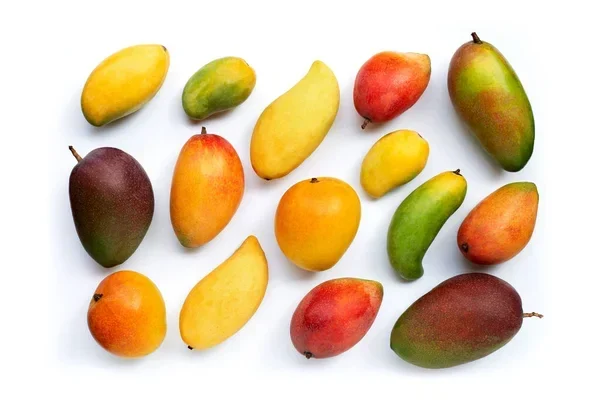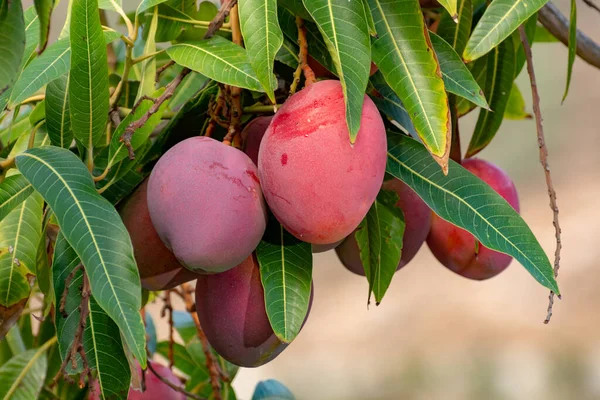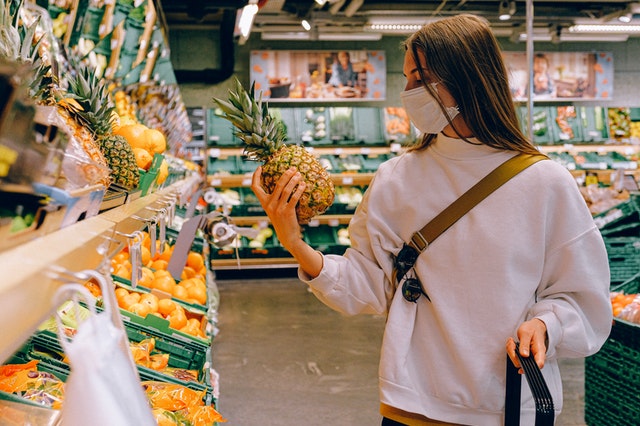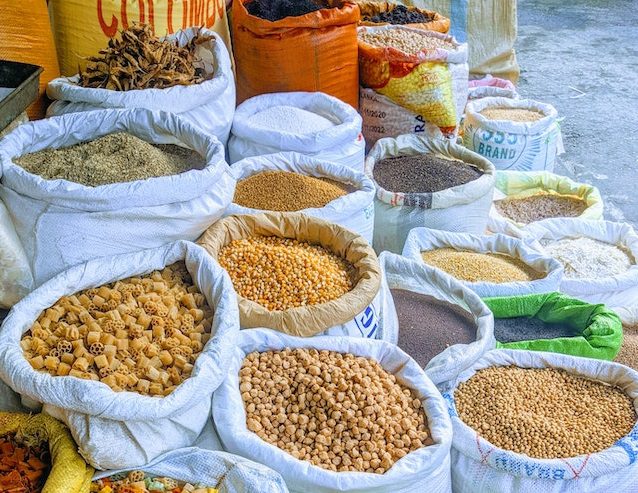Are you curious about the different mango varieties grown in Kenya? Growing the best mango type for your farm has many benefits. For instance, you will get higher yields per tree. The quality of the fruits is higher and you can sell sweeter, juicier, and good flavored mango. As a result, you will make more money because you can sell fruits with a high demand in both local and export markets. Finally, you can reduce your cost of production by growing varieties that have tolerance to certain pests or diseases.
Termed as the king of fruits, mango or the Mangifera indica has over 1000 varieties throughout the world. its one of the best fruits to grow in Kenya’s dry areas for cash. In this post we give you 13 best mango varieties in Kenya, they are; Ngowe, Tommy Atkins, Van Dyke, Kent, Keitt, Apple and Sabine varieties. Haden, Sabre, Peach and Kitovu are the other mango types in kenya. Finally, you can also grow the Kimji, Turpentine or the Boribo among others.
How to choose the best mango variety

How do you select the best mango type to grow in your farm? This guide gives you 6 factors to consider when you are choosing mango cultivars to plant in your farm These include yield per tree, the fruit weight, altitude, climate and soil considerations as well tolerance to pest and diseases and the fruits harvesting period. Below is a summary on how to decide.
- Climate and soil conditions; Mango farming success will depend on you growing a type that is best fit for your farm’s altitude, soil and climate. Using Kenya’s agro-ecological zoning, there are two major mango categories;
- coastal/lowland varieties, these are fit for growing in areas of 0-800 MASL. Examples are the Ngowe, You will find their huge populations in Mombasa, Kilifi, Tana-River and Lamu areas.
- mid altitude varieties. These do well in areas of 800-1600 metres above sea level. They are common in Embu, Meru, Muranga, Marakwet, Kitui, Machakos and Makueni.
- Yield potential; Grow mango varieties that have a heavier weight per fruit. Second, go for a mango type that gives you many fruits per tree per season.
- Market demand; Grow mangoes that have a high demand and prices in both the local and international markets. This way you can recoup your investment easily.
- Disease and pest resistance; choose mango varieties that are resistant to mango pests and diseases. Such trees are cheaper to manage for you reduce the need for using pesticides and other control measures.
- Fruit qualities; grow mango varieties with a high quality in terms of the fruit’s shape, size, weight, color, freshness, taste and flavor etc. The table below has each fruits weigh for comparison. The section below gives you additional features for each.
- Maturity or Harvesting period; The early and late maturing mango varieties make you more money. They are available in the market when prices are high. See the table below for comparison
Read Next: 10 best Fruits to Grow in Kenya?
Best 13 mango varieties in Kenya
In this section, we give you a list of the best mango types in Kenya. We will give you features of each using the factors you need to consider for easy decision making.
| Mango Variety | Fruit Weight (grams) | Fruits/Tree/Season |
|---|---|---|
| Ngowe | 523g | 250-300 |
| Tommy Atkins | 522g | 400-600 |
| Van Dyke | 280g | 28-400 |
| Kent | 545g | 450-800 |
| Keitt | 456g | 200-250 |
| Apple | 397g | 150-200 |
| Sabine | 435g | – |
| Haden | 431 g | 450 |
| Sabre | 233g | 200-250 |
| Peach | 80-100 g | 150-200 |
| Kitovu | 300—500 g | 300-5 |
| Turpentine | 250-300 g | 150-250 |
Ngowe
Ngowe or the Lamu mango is the common mango cultivar along the Kenyan coast. They prefer sandy, well-drained soils and can survive with little rainfall. Its trees are small sized with a well rounded canopy. The variety is a low land variety and does well in low altitude areas.
The tree has medium yields and alternate bearing may occur. The fruits are orange to yellow-coloured when ripe. They are oblong and slender in shape with a prominent beak. The Ngowe mango flesh is deep yellow, free from fibre and of excellent quality for use as fresh market and for processing. The variety is moderately tolerant to anthracnose but susceptible to powdery mildew
- Altitude; 0-800 metres above sea level
- Harvest Season; November to March
- Fruit Weight; 425—600 g (mean: 523 g)
- Fruit Measures; 14 cm long and 9.5 cm wide
Tommy Atkins
Tommy Atkins is an early to mid-season cultivar that is high yielding (400-600 fruits/tree/season). The tree is large and has a compact rounded canopy. The variety is slightly tolerant to anthracnose disease and is best suited for cultivation in mid altitude areas (800-1600 metres above sea level). It bears fruits consistently which matures between Jan-March. The fruits are orange/yellow with a heavy red blush and numerous white lenticels. Tommy atkins fruits are sweet and fibreless, medium to large sized with an average weight of 522g, oval to oblong shaped (average length 12.6 cm and width 9.9 cm) and a broadly rounded base
- Altitude; 0-800 metres above sea level
- Harvest Season; November to March
- Fruit Weight; 425—600 g (mean: 523 g)
- Fruit Measures; 14 cm long and 9.5 cm wide
- Yields; 400-600 fruits/tree/season
Van Dyke
Vandyke is a large tree with an open canopy that is best suited for cultivation in mid altitude areas (800-1600 metres above sea level). It is a mid-season variety that is moderate yielding. The variety is a regular bearer and comes into bearing in January-March.
The Van Dyke fruits are small to medium sized, with an oval shape and a prominent beak. When ripe, they are bright yellow with a heavy crimson blush, covered by numerous yellow/white lenticels. The fruits are sweet with little fibre and strong a pleasant aroma.
- Altitude; 800-1600 meters above sea level
- Harvest Season; January to March
- Fruit Weight; 280 g
- Fruit Measures; 10.5 cm long and 7.6 cm wide
- Yields; 28-400 fruits/tree/season
| Category | Harvesting Period | Mango Varieties |
|---|---|---|
| Early Maturing | Nov- Mid Jan | Ngowe Mangoes, Dodo Mangoes, Kensington Mangoes, Zill, and Apple Mangoes. |
| Mid-Season | Mid Jan- Late Feb | Sabine Mangoes, Peach Mangoes, Sabre Mangoes, Tommy Atkins Mangoes, Matthias Mangoes, Irwin Mangoes, Van Dyke Mangoes, Boribo Mangoes, and Smith Mangoes |
| Late Maturing | Late Feb- April | Kent Mangoes, Sensation Mangoes, Zillate Mangoes and Keitt Mangoes. |
Kent
The Kent is a high yielding, late season mango variety that comes into bearing in late season. The tree has a tendency of alternate bearing. The tree is large and has an upright canopy. The variety is best for growing in mid altitude areas between 800-1600 ASL.
The Kent produces fruits that are large in size. They are oval in shape. They are greenish-yellow with a red/crimson blush and numerous yellow lenticels. Some advantages of growing the fruits is because they are sweet, fibreless, strong flavored and have a long shelf life.
- Altitude; 800-1600meters above sea level
- Harvest Season; late February-April
- Fruit Weight; 545g
- Fruit Measures; 12.4 cm long and 9.7 cm wide
- Yields; 450-800 fruits/tree/season
Keitt
Keitt mango variety is a moderately vigorous tree. It has long arching branches and a natural scraggy open canopy. The Keitt variety is best suited for cultivation in mid altitude areas. It is a high yielding and late season variety that bears fruits regularly.
The fruits are large sized with an average weight of 456g, plump and oval shaped. They are greenish-yellow with a red/pink blush and numerous white, yellow or red lenticels. The flesh is deep yellow juicy and with a little fibre near the seed.
Some benefits of the Keitt variety’s is its fair tolerance to anthracnose disease. In addition, its fruits have a long shelf life. On the downside, the Keitt fruits are susceptible to sunburn.
- Altitude; 800-1600 metres above sea level
- Harvest Season; March-April
- Fruit Weight; 456 g
- Fruit Measures; 11.7 cm long and 9.2 cm wide
Apple
The Apple also known as Maharaja mango variety is a medium yielding and an early season variety. It shows a tendency to bear fruits alternately.
The tree is large with a pyriform canopy. The variety is is best suited for cultivation in low altitude areas The fruits are medium to large in size with an average weight of 397g and round in shape. The ripe apple mango have a deep yellow/orange to red colour. The flesh is yellow, juicy, fibreless and with excellent flavour.
The Apple mango variety is susceptible to anthracnose and powdery mildew.
- Altitude; 0-800 metres above sea level
- Harvest Season; November to March
- Fruit Weight; 397 g
- Fruit Measures; 9.7 cm long and 11 cm wide
Sabine
Sabine is a late maturing variety that and bears fruits regularly. The tree has a vigorous growth with dense canopy. The Sabine Variety has some resistance to powdery mildew and anthracnose.
The Sabine variety is best suited for cultivation in mid altitudes. It produces fruits that are medium to large size. They elongated in shape measuring 14.2cm and 6.6 cm. The ripe fruits have a blight yellow and a red blush. The flesh is yellow, juicy, fibreless and with a mild flavour.
- Altitude; 800- 1600 metres above sea level
- Harvest Season; Late January-March
- Fruit Weight; 435g
- Fruit Measures; 14.2 cm long and 6.6 cm wide
Haden
Haden is a high yielding and early season mango variety. The tree grows large and has a spreading canopy. However, its susceptible to anthracnose. The variety is best suited for cultivation in mid altitude areas.
The fruits are medium to large sized and are ovate in shape. The fruit skins have a deep yellow with a deep crimson/red blush with whitish/yellow lenticels. The flesh is deep yellowish orange, juicy and with an excellent aroma.
- Altitude; 800-1600 metres above sea level
- Harvest Season; January to March
- Fruit Weight; 431 g
- Fruit Measures; 10 cm long and 8 cm wide
- Yields; 450 fruits/tree/season
Sabre
Sabre is a high yielding and early harvesting mango variety. The tree is medium size and fairly resistant to diseases. It is used as a rootstock to other mango varieties. The Sabre is an excellent rootstock variety that is used to create dwarfism in other varieties.
The fruits are medium sized (average weight 180-290g), kidney-shaped with a prominent beak (average length 11.8cm and width 6.9cm). They are yellow-green with a reddish blush. The flesh is deep orange, juicy with moderate fibre and a turpentine after-taste.
- Altitude; suitable for higher elevations
- Harvest Season; December to February
- Fruit Weight; 180-290g (233g average)
- Fruit Measures; 11.8 cm long and 6.9 cm wide
Peach
Peach also known as Zill Mango is a high yielding and early mango variety. The peach tree has a medium size and are fairly resistant to diseases. It is a common stock used as a rootstock to other mango varieties.
The fruits are small sized with an average weight of 80-100g. They are round-shaped with a depressed beak (average length 5.8cm and width 3.9cm). They are brown-green with a reddish blush. The flesh is deep orange, juicy with fibre and a sweet-taste.
- Harvest Season; December to March
- Fruit Weight; 80-100 g
- Fruit Measures; 5.8 cm long and 3.9 cm wide
Kitovu
Kitovu mango is a local mango variety commonly grown in Uganda and Tanzania. Kitovu is a high yielding and early variety (December-April). The fruits are small sized (average weight 100-150g), kidney-shaped with a prominent end (average length 6.8 cm and width 4.9 cm). They are yellow-green with a greenish blush. The flesh is deep orange, juicy with fibre and a turpentine after-taste. The tree is medium size and fairly resistant to diseases. It is used as a rootstock to other mango varieties
- Harvest Season; December-April
- Fruit Weight; 100—150 g
- Fruit Measures; 6.8cm long and 4.9 cm wide
Kimji
Kimji is a high yielding local mango variety. The fruits are small in size with a kidney (average length 5.5cm and width 3.5cm). They are yellow-green in colour. The flesh is deep orange, juicy with moderate fibre and a sweet after-taste. The variety has a large tree and is fairly resistant to diseases. It is used as a rootstock to other mango varieties.
- Fruit Measures; 5.5cm long and 3.5 cm wide
Turpentine
Turpentine also known as Manila mango variety is a high yielding variety that can withstand high salt levels compared to the rest. The fruit is small, round to ovate in shape and yellow in colour. The yellow flesh is extremely fibrous, with a common classic flavour. Some turpentines carrying a stronger resin component while others sweeter, and with tolerable fibre. The tree exhibits dwarfing characteristics and fairly resistant to diseases. It is used as a rootstock to other mango varieties
Other Mango Varieties
In addition to the above Mango varieties, there are other mango varieties in Kenya. They include Mango variety 311, Carabao, Golek. Arumanis, zillate, Nimrod,Maya etc. You can read more on the ongoing research by the KEFRI/KARLO Mango Research and KALRO Mango timps.pdf.
Conclusion
This guide gives you a list of 13 best mango varieties in Kenya. They include Kent, Haden and Ngowe among others. The post compares their yields, average weight and flavor among other fruit qualities. Besides you can learn about other features to choose the best variety. These are the tree canopy, soil requirements, altitude as well as their resistance to common pests and diseases.



